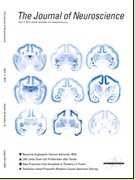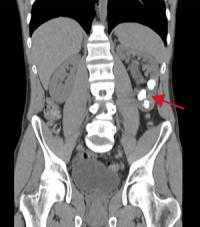J Neurosci:张志珺等揭示aMCI和RGD发病机制存在关联
2012-04-20 曹河圻 朱元贵 董尔丹 国家自然科学基金委员会
近日,国际著名杂志《神经科学期刊》The Journal of Neuroscience以封面文章发表了东南大学附属中大医院等机构的最新研究成果“Topologically Convergent and Divergent Structural Connectivity Patterns between Patients with Remitted Geriatric Depression and
近日,国际著名杂志《神经科学期刊》The Journal of Neuroscience以封面文章发表了东南大学附属中大医院等机构的最新研究成果“Topologically Convergent and Divergent Structural Connectivity Patterns between Patients with Remitted Geriatric Depression and Amnestic Mild Cognitive Impairment,”,文章中,研究者揭示了aMCI和RGD发病机制存在关联
在国家杰出青年科学基金和国家自然科学基金重点项目等项目的资助下,东南大学附属中大医院神经精神医学科张志珺教授和北京师范大学认知神经科学与学习国家重点实验室贺永研究员的研究小组,最近采用弥散张量磁共振成像技术和图论分析策略探讨脑白质结构连接网络,首次发现遗忘型轻度认知障碍(Amnestic mild cognitive impairment,aMCI)和恢复期老年抑郁症(Remitted geriatric depression,RGD)存在相似的神经环路损害模式。
全球老龄化日趋显著,阿尔茨海默病(Alzheimer’s Disease,AD)已成为严重的社会公共卫生问题,其高发病率和高致残率已成为当今困扰人类心身健康的重大精神疾患,给患者、家庭和社会带来沉重的负担。近年来,aMCI和RGD患者被认为是AD的高危人群,因此阐明这两种脑疾病可能的“共病”机制已成为目前国际AD研究领域的一个重要科学问题。弥散张量成像技术是目前唯一能够无创检测大脑白质纤维连接的成像方式,在AD及其高危人群的脑白质环路研究上具有重要作用。该工作研究人员首先对35名RGD、38名aMCI患者和30名正常对照进行了大脑弥散张量成像扫描,然而采用确定性纤维跟踪技术重建了三组人群的大脑白质纤维连接网络,并采用复杂网络分析技术考察了脑网络的全局和局部拓扑属性。结果表明,两个病人组的脑白质网络同正常人一样都表现出高效的“小世界”连接属性,但是他们的全脑网络连接强度和全局效率较正常对照显著降低,两种疾病患者之间无显著差异。
在脑区的局部节点上,两组病人的节点效率在额叶脑区都降低,并且aMCI组比RGD组在后扣带皮层的效率更为降低。该研究结果提示aMCI和RGD患者的脑神经环路的变化模式具有较多的共同点和较少的差异,这为理解AD的发病机制提供了新的视角。该研究整合了精神卫生和神经影像的优秀研究团队和技术,研究结果首次证实了aMCI和RGD在发病机制上存在内在关联,这为进一步探讨两种疾病神经调节环路的“共病”基础以及AD风险人群的治疗时间窗提供了初步证据。

doi:10.1523/JNEUROSCI.5061-11.2012
PMC:
PMID:
Topologically Convergent and Divergent Structural Connectivity Patterns between Patients with Remitted Geriatric Depression and Amnestic Mild Cognitive Impairment
Feng Bai1,2,*, Ni Shu3,*, Yonggui Yuan1, Yongmei Shi1, Hui Yu2, Di Wu2, Jinhui Wang3, Mingrui Xia3, Yong He3, and Zhijun Zhang1
Alzheimer's disease (AD) can be conceptualized as a disconnection syndrome. Both remitted geriatric depression (RGD) and amnestic mild cognitive impairment (aMCI) are associated with a high risk for developing AD. However, little is known about the similarities and differences in the topological patterns of white matter (WM) structural networks between RGD and aMCI. In this study, diffusion tensor imaging and deterministic tractography were used to map the human WM networks of 35 RGD patients, 38 aMCI patients, and 30 healthy subjects. Furthermore, graph theoretical methods were applied to investigate the alterations in the global and regional properties of the WM network in these patients. First, both the RGD and aMCI patients showed abnormal global topology in their WM networks (i.e., reduced network strength, reduced global efficiency, and increased absolute path length) compared with the controls, and there were no significant differences in these global network properties between the patient groups. Second, similar deficits of the regional and connectivity characteristics in the WM networks were primarily found in the frontal brain regions of RGD and aMCI patients compared with the controls, while a different nodal efficiency of the posterior cingulate cortex and several prefrontal brain regions were also observed between the patient groups. Together, our study provides direct evidence for the association of a great majority of convergent and a minority of divergent connectivity of WM structural networks between RGD and aMCI patients, which may lead to increasing attention in defining a population at risk of AD.
本网站所有内容来源注明为“梅斯医学”或“MedSci原创”的文字、图片和音视频资料,版权均属于梅斯医学所有。非经授权,任何媒体、网站或个人不得转载,授权转载时须注明来源为“梅斯医学”。其它来源的文章系转载文章,或“梅斯号”自媒体发布的文章,仅系出于传递更多信息之目的,本站仅负责审核内容合规,其内容不代表本站立场,本站不负责内容的准确性和版权。如果存在侵权、或不希望被转载的媒体或个人可与我们联系,我们将立即进行删除处理。
在此留言














#ROS#
51
#MCI#
62